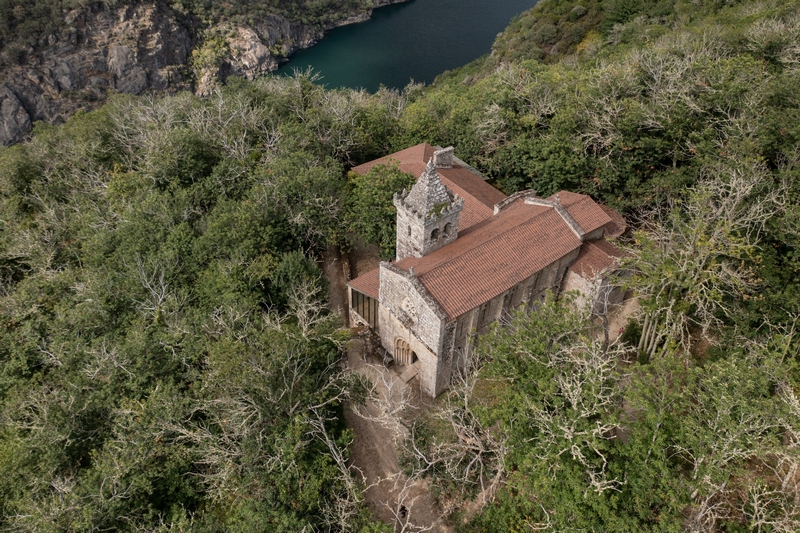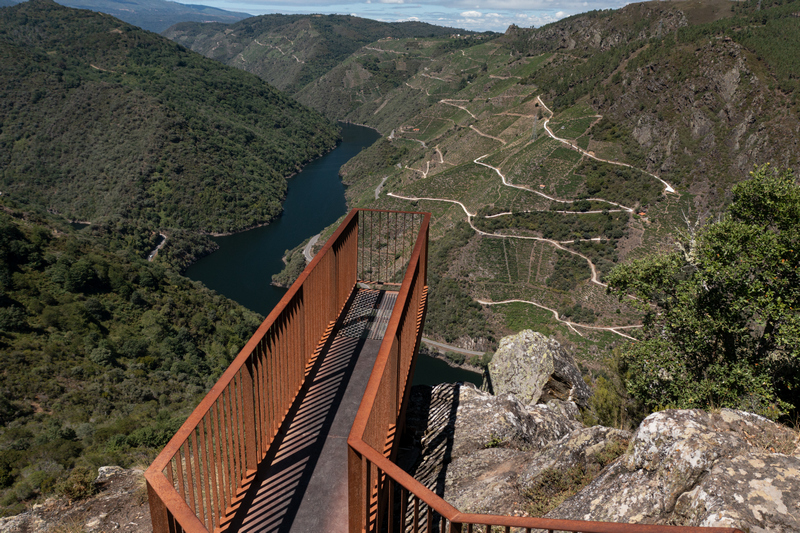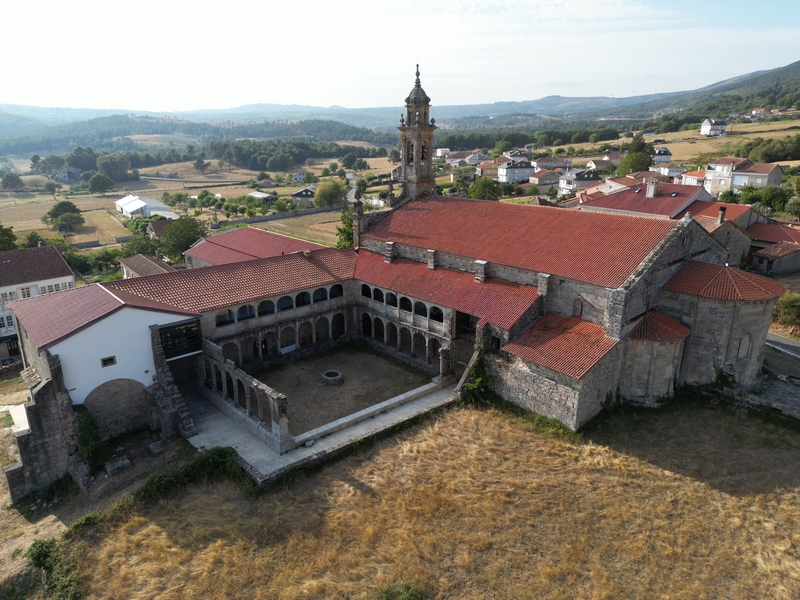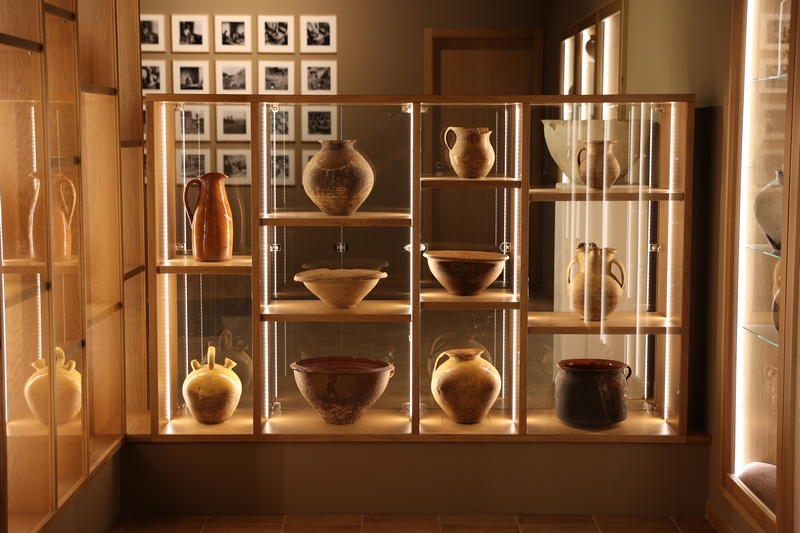The geo-destination Ribeira Sacra contains the municipalities of de A Peroxa, A Pobra de Trives, A Teixeira, Castro Caldelas, Chandrexa de Queixa, Esgos, Manzaneda, Montederramo, Nogueira de Ramuín, O Pereiro de Aguiar, Parada de Sil, San Xoán de Río y Xunqueira de Espadanedo.
Making Ourense and Lugo a single kingdom, the waters of the Rivers Sil and Miño flow and then create a divine environment, the Ribeira Sacra. A place touched by Heaven. Stunning scenery such as the canyons of the River Sil – which are navigable – and landscapes that are home to one of the largest concentrations of churches and monasteries in Europe. Some are as impressive as that of Santo Estevo de Ribas de Sil, built on a hillside and surrounded by lush forests. Or that of Montederramo, of colossal dimensions. Or, excavated from the rock, San Pedro de Rocas, the oldest in Galicia.
And the vineyards. For in this land – fertile and with a suitable microclimate – the monasteries created a wine culture that is more alive today than ever, under the D.O. Ribeira Sacra. We're talking of vineyards on slopes so steep that their cultivation requires a heroic effort. Thus was born the legendary Amandi, a red wine that for centuries was produced exclusively for the Pope.
Heritage
Water was the first road in the Ribeira Sacra. Natural borders that organise the space are established along the sides of the rivers that run through the valleys. The local topography invites one to meditate, reflect and discover oneself. Perhaps this was why monastic orders took shelter here with a new life arising alongside them on the banks of the Rivers Miño and Sil.
From the early Middle Ages until they were confiscated and privatised by the government, monasteries played a particularly important role in this part of Galicia. Monasteries and the culture that was generated around them are important today as well, because they imprinted this land with an aura that is unique in the world, and because they have come down to us today bearing witness to the past in the culture of the present.
In its landscapes, the Ribeira Sacra boasts a wonderful compendium of the remains of different periods. Prehistoric inhabitants left behind burial mounds and fortified pre-Roman Iron Age villages that have come down to us as landscapes of life from another time. Outstanding examples include the As Cabanas mámoas (dolmens) in Nogueira de Ramuín. But the Roman presence in these lands was also instrumental in providing them with cultural tradition and a particular aesthetic.
The Ribeira Sacra, however, is named after the settlement of large monasteries on the banks of the river that were the cradle of culture and spirituality of a time, and that are now this land's treasures made of stone. The Convents of Santa Cristina de Ribas de Sil in Parada de Sil, , Santa María in Montederramo, San Pedro de Rocas in Esgos, Santa María de Xunqueira de Espadanedo and Santo Estevo de Ribas de Sil in Nogueira de Ramuín are all colossal examples of religious architecture.
Natural reserves
From the Balcón de Madrid or from the viewpoint located between Vilouxe and Caxide, we can catch a glimpse the abyss from the highest point of the Canón do Sil..There are several catamaran routes that allow one to ride the waters of the two rivers – the Miño and the Sil –, providing an opportunity to get to know the Ribeira Sacra from a spectacular perspective. The vineyards clinging to the sunny side of the mountains and the depths to which the canyon plunges fully introduce the visitor into a feeling of adventure and the awareness of being someplace uniquely special.
The Canón do Sil is a Site of Community Importance, as is the Bidueiral de Montederramo forest.
Festivals and gastronomy
The Ribeira Sacra is also the name of the Denomination of Origin of its famous wines, whose production was begun long ago by the monastic communities that settled on the banks of the rivers Other local festivals have also been declared official Galician Tourist Events: Folión Tradicional do Entroido de Manzaneda and the Festa da Bica in A Pobra de Trives. These are examples of traditional local customs passed down from father to son and that come down to us as a tourist attraction as well.
In addition to growing grapes and olives for oil, other traditional occupations are still preserved in the area. Very much appreciated by visitors are the potteries of Niñodaguia, where the work is done with clay obtained locally and fired in artisan kilns that are, today, small relics heavy with identity.





